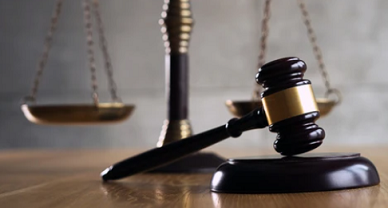Within The Scope of This Concise Analysis, the Case of Bajaj Auto Ltd. v. T.V.S. Motor Company Ltd. Is Investigated
ABSTRACT
The legal dispute between Bajaj and TVS Motors centers around the alleged unauthorized use of the DTSi patent. This case holds significant importance not only due to the financial implications for the involved parties but also due to its implications for the application of the doctrine of pith and marrow. The present paper examines this case study, encompassing its factual background, legal arguments presented, the court’s ruling, and subsequent analysis.
Notably, this case stands out in the Indian legal landscape as one of the rare instances where the Doctrine of an Equivalents also known according to the principle of “pith and marrow” has been applied. Moreover, the underlying principles that guided the court’s decision are of paramount importance.
Introduction
The main emphasis of the case pertains to accusations of patent infringement made by the defendant, as well as the subsequent pursuit of damages. Furthermore, it tackles the dispute on the defendant’s rationale for making threats pertaining to the identical case. In year 2007 the plaintiffs (Bajaj Auto Ltd.) and the state of Maharashtra filed a lawsuit in the Madras High Court. They accused the defendants (T.V.S. Motor Company Ltd.) of violating their patents related to the development of “enhanced internal combustion engine technology”. The plaintiffs are requesting a permanent injunction as a remedy[1]. In order to deter the defendants from:
1.Utilizing the invention or technology outlined in the patents owned by the plaintiffs; and
2.The proposed measure aims to restrict the commercialization, vending, offering for sale, or exportation of two or three-wheelers including the (125cc TVS FLAME) motorbike, that incorporate the disputed “internal combustion engine” or any product that violates the patent. Furthermore, they are pursuing reparation for the violation of patents.
The plaintiffs submitted an application to the same court, for the purpose of obtaining a temporary injunction against the defendant, while the action was still ongoing. The purpose of this order was to secure the identical remedy as requested in the first lawsuit, which involved a permanent injunction. The purpose of submitting the application was to mitigate the risk of patent infringement amongst the ongoing legal proceedings.
The defendants initiated legal proceedings in court to prevent the plaintiffs from alleging patent infringement through various means, thereby obstructing the launch of their product (TVS FLAME). This lawsuit was pending already the court when the defendants file an application seeking to prevent the plaintiffs from issuing such threats until the conclusion of the suit.
case study examines the substantive aspects of the lawsuit in accordance with provisions outlined in the Patents Act-1970. Furthermore, it explores various legal tests established by the Supreme Court in relevant cases.
The latest ruling by the Supreme Court holds notable importance as it underscores the need of immediately resolving temporary injunction concerns and instructs the Madras High Court to promptly handle the matter in question.
JUDGMENT AND ITS ANALYSIS:
Following deliberation on the arguments presented by both parties, the experienced judge thoroughly examined multiple dimensions of the case and reached a conclusion.
Regarding the issue of Interlocutory Injunction, the court weighed the following principles in granting such injunction in the ongoing patent dispute:
- The Plaintiff is required to provide evidence that establishes the patent’s validity and its infringement.
- The balance of convenience must favor the Plaintiff.
- The Plaintiff may suffer significant and irreversible damage if an injunction order is not issued in their favor.
Based on the aforementioned principles, the court made the following observations:
Prior to reaching a conclusive decision on the creation of a prima facie case by the Plaintiff, the Court engaged in deliberation regarding the contention put out by the applicants. The authors contended that subsequent to the modification made to In accordance with Patents Act of 1970, Section 48, in the event that a patent holder commences legal proceedings for infringement based on their granted patent, the court ought to adopt a prima facie presumption of the patent’s validity until it is invalidated on any grounds outlined in Section 64 of the Patents Act, 1970[2], or through alternative methods.

The Court expressed its opinion that the modification granted the patent holder an exclusive authority to prohibit refraining from utilizing or selling to third parties the patented innovation. Before the modification, the patent holder possessed exclusive privileges to personally utilize the innovation, through agents, or through licensees, as well as to exercise, sell, or distribute the inventions within the geographical boundaries of India.
Furthermore, the court took into consideration the respondent’s contention that Section 13(4) of the Patents Act, 1970 establishes that the mere act of issuing a patent does not intrinsically guarantee that the invention is legitimate. In the case of Bishwanath Prasad Radhey Shyam v. Hindustan Metal Industries[3], the Court made reference to the decision that was handed down by the Honourable Supreme Court.The Supreme Court, in the aforementioned ruling, underscored that the assurance of a patent’s validity is not inherently ensured by its issuance and sealing, nor by the ruling made by the Controller in instances of resistance.
In the context of revocation or infringement actions, this observation highlights the possibility of disputing the validity of a claim that is brought before the High Court on a variety of grounds. A provision in the Act known as Section 13(4) lends support and reinforcement to the opinion.
Regarding the matter of the presumption of patent validity, the court observed that although the revised section 48 places great importance on the patent, the requirement to establish a prima facie case.
regarding the patent’s validity and infringement remains unaltered. Thus, it is the responsibility of the plaintiff to substantiate a prima facie case.
The court observed that a conclusive assertion, which offers a more expansive interpretation than what was previously accessible during the period of preliminary specification, cannot be rendered null and void. The court cited the rulings in Patent Exploitation Ltd. v. Siemens Brothers & Co. Ltd[4]. and Sandow Ltd. v. Szalay[5] to substantiate this observation.
The court has noted several factors that support the Applicants’ position.
- Since the tentative specification date in 2002, the Respondent has refrained from expressing any objections, even subsequent to the launch of the product (Bajaj Pulsar motorbike) onto the market.
- The share of “DTS-i Technology” had a notable surge from 2003 to 2008, suggesting that the product protected by the Applicant’s patent had gained considerable popularity in the market.
- The actions of the Respondent seemed to be motivated by a lack of good faith, as it had not expressed any objections to the Applicant’s product subsequent to the filing of the patent application. However, in 2007, the Respondent made the decision to submit a revocation petition to the IPAB for the first time. Furthermore, the expeditious initiation of “FLAME” by the Respondent within a span of six days subsequent to the submission of the revocation petition serves as additional evidence of its dubious behavior.
The idea of presuming the validity of a patent. The patent that was granted to the applicant specifically references the date of application, which is either July 16th, 2002 or 2003. This date aligns with the release of the applicant’s product, Bajaj Pulsar “DTS-i Technology”. According to the Act, the validity of this patent spans a duration of 20 years.
The court referenced the legal decision in the case of K. Ramu vs. Adyar Ananda Bhavan Muthu lakshmi Bhavan[6], which pertained to the legitimacy of the patent that was granted. In this judicial decision, Justice S. Rajeswaran made an observation regarding the recognition of a patent right and its subsequent validity for a period of 20 years.
It was noted that the plaintiff is considered to have successfully met its initial duty of substantiating the safeguarding of its patent through the issuance of a certificate by the appropriate authorities in accordance with the Patents Act.
The act of submitting a revocation petition in accordance with section 64 of the Act does not inherently lead to a presumption that the patent is invalid.
- Inquiry regarding violation In relation to the matter of infringement, the court observed that the key differentiating element among the products of the parties engaged was the incorporation of three valves. In addition to this particular aspect, it may be observed that the product offered by the respondent bears a fundamental resemblance to the patented product of the applicant. The petitioner contended that the third valve under consideration is purely superficial and does not have a substantial effect on the fundamental nature of the petitioner’s innovation. Nevertheless, the court concluded that the issue of whether the third valve has a significant impact on the applicant’s innovation can only be answered by a thorough trial[7].
- Protection of Variant. In addition, the court considered the defense of genetic variation. This concerns the determination of whether a characteristic of a purported violation lies beyond the primary, literal, or contextual significance of a descriptive term or expression in the assertion, yet remains within its purview when appropriately construed.
In order to provide a response to this inquiry, the court utilized the purposive construction of language test, which was developed in the case of Improver Corporation and Others v. Remington Consumer Products Ltd. and Others[8].
Test for Pith and Marrow: The necessity of a purposive construction in identifying the unique characteristics of an invention that form its core essence has been firmly established in numerous legal rulings. The pivotal question pertains to whether, as perceived by individuals with practical expertise and experience in the pertinent domain of the invention, the patent holder intended absolute conformity to particular descriptive term or phrase delineated in claim as an essential prerequisite of the invention. In the given situation, any deviation that lies beyond the exclusive rights asserted by the patent holder, regardless of its absence of significant impact on the functionality of the invention, would be deemed non-infringing[9]
THE COURT’S DECISION AND APPEALS TO THE COURT
After conducting a comprehensive analysis of the arguments put forth by the legal representatives of both parties, as well as their legal documents and various elements of the case pertaining to the originality and lack of obviousness of the patent under scrutiny, the esteemed court determined that it met the necessary requirements for issuing the injunction. The aforementioned factors encompass the formation of a prima facie case, the consideration of the balance of convenience, and the assessment of the insufficiency of damages in support of the applicant. As a result, the court was inclined to grant an interim order in favor of your petitioner.
The Respondents, expressing their dissatisfaction with the interim order issued by the learned court, filed an appeal against it within the jurisdiction of the Division Bench of the Madras High Court! Furthermore, the appeal was granted by the Division Bench of the Madras High Court shortly after that. The aforementioned circumstances prompted the submission of a final appeal via the Special Leave Petition to the esteemed Supreme Court[10]
The temporary restraining ruling was invalidated by the Supreme Court, providing the Respondents with the opportunity to sell their product in the market, as long as they kept accurate records of sales throughout India and export transactions. Furthermore, the Court designated a receiver to supervise and manage this procedure.
Upon the identification of the pending permanent injunction lawsuit, the Court directed the knowledgeable sole judge to expeditiously resolve it. Moreover, the Court issued a directive to the Respondents, instructing them to provide a written statement in the lawsuit.
AN EXAMINATION OF THE JUDGMENT
Although the Supreme Court overturned the temporary injunction relief given by the High Court, the rulings nonetheless hold considerable significance. The crux of this ruling resides in the procedures employed by the knowledgeable presiding judge of the High Court in order to arrive at its determination.
In addition, the ruling offers a thorough and in-depth analysis of the tests, including the ‘pith and marrow’ test, the ‘defense of variant’ test, and the presumption of patent validity.
The final ruling of the court in the permanent injunction lawsuit is currently pending and has yet to be observed.
Author:- Abhishek Gakare, in case of any queries please contact/write back to us at support@ipandlegalfilings.com or IP & Legal Filing.
REFERENCES
- Under section 108 of the Patents Act, 1970.
- After 2003 amendment, Section 48 says
- AIR 1982 SC 1444.
- 1903 RPC 225.
- 1906 RPC 6.
- 2007 (34) PTC 689
- The court referred to judgment of English Court in Court of Appeal in William Needham and James Kite v. Johnson and Co. 1884 JRPC 49.
- 1990 FSR 181
- AIR 1978 Delhi 1
- Markandey Katju and Ashok Kumar Ganguly JJ


